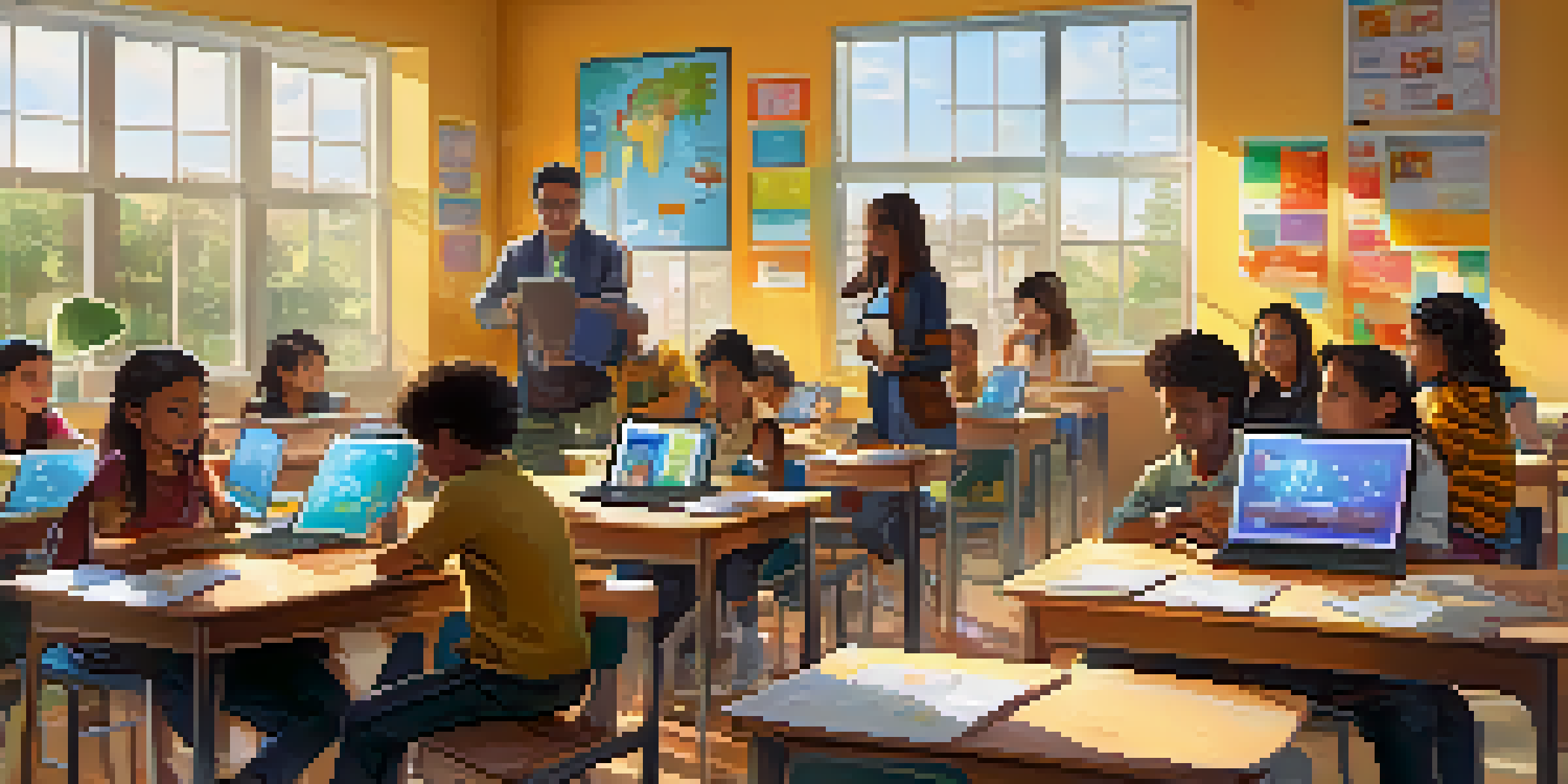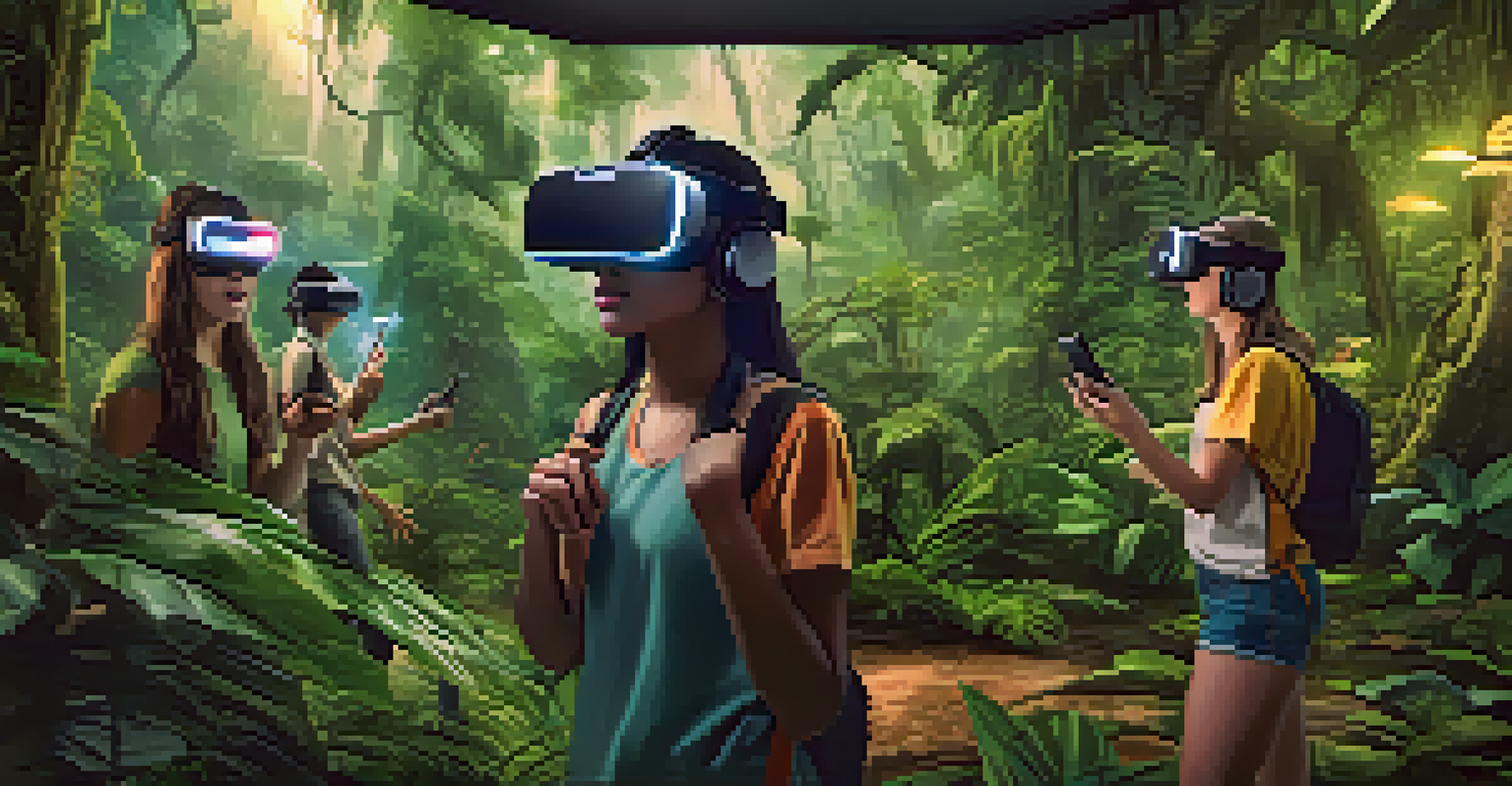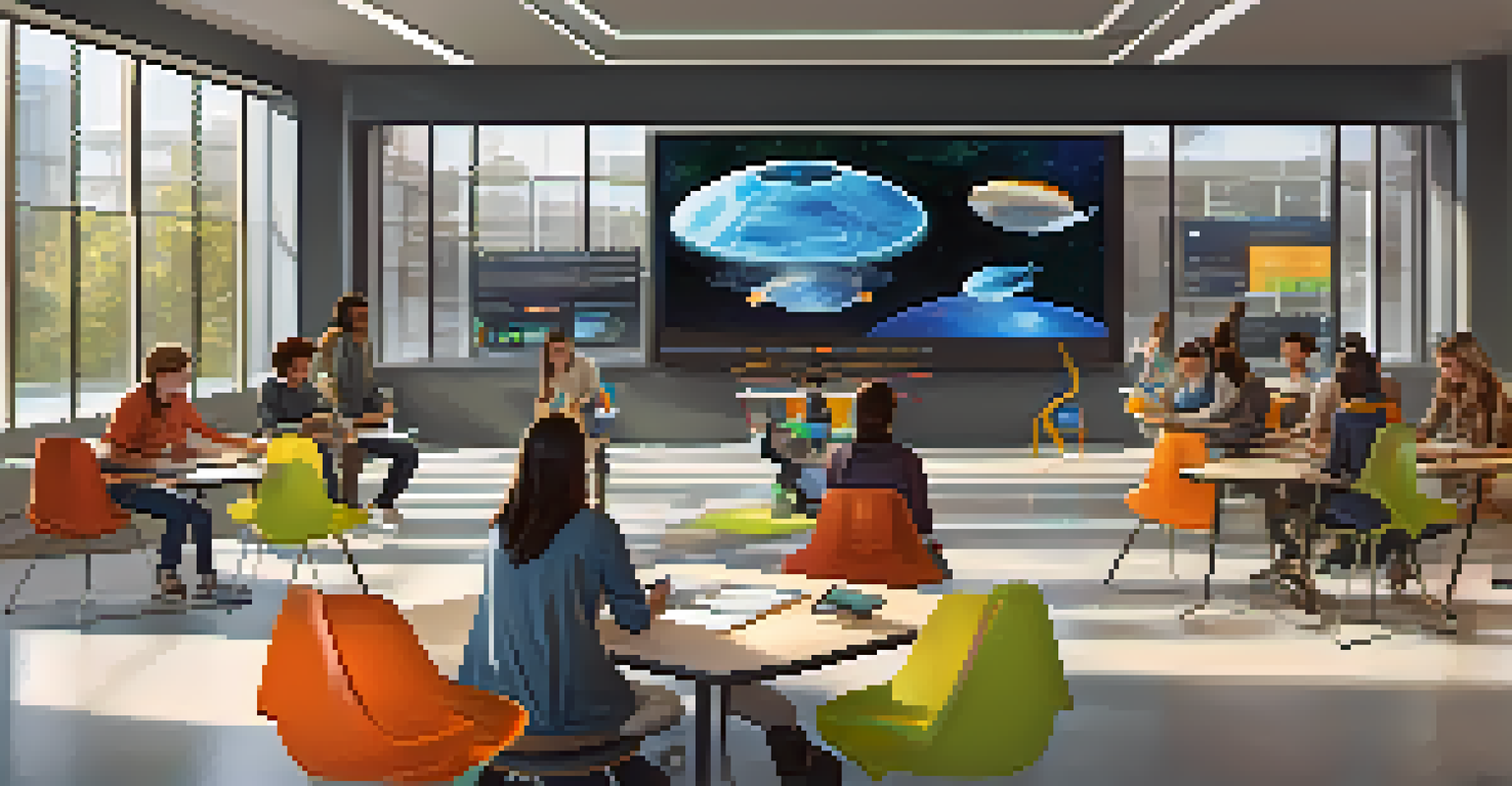The Role of Technology in Shaping Brain Responses to Learning

Understanding Brain Responses to Learning
Our brains are remarkable organs that adapt and change based on experiences, a phenomenon known as neuroplasticity. When we learn something new, our neurons form connections, making it easier to recall information later. This process is influenced by various factors, including the methods and tools we use for learning.
Education is not the filling of a pail, but the lighting of a fire.
For instance, traditional classroom settings often rely heavily on lectures, which may not engage all types of learners. In contrast, incorporating technology can provide diverse and interactive learning experiences. This shift not only enhances engagement but also alters how our brains respond to information.
Ultimately, understanding brain responses to learning helps educators and learners alike find the most effective ways to absorb and retain knowledge. The interplay between technology and learning is a fascinating area of study that continues to evolve.
The Impact of Digital Tools on Learning
Digital tools, such as educational apps and online platforms, have transformed how we approach learning. These tools often incorporate gamification, which makes learning interactive and enjoyable. As a result, learners are more likely to engage with the material, leading to a deeper understanding and retention of knowledge.

Research suggests that digital tools can stimulate brain areas associated with reward and motivation. This means that when learners experience success through these tools, their brains release dopamine, reinforcing positive learning behaviors. Interestingly, this not only makes learning fun but also encourages a continuous desire to learn.
Neuroplasticity Enhances Learning
Our brains adapt through neuroplasticity, forming connections that improve information recall during the learning process.
Moreover, these digital tools allow for personalized learning experiences, catering to individual learning styles. This flexibility can significantly enhance brain responses, as learners engage with content that resonates with them.
The Role of Virtual Reality in Learning
Virtual reality (VR) has emerged as a groundbreaking technology in education, providing immersive experiences that traditional methods cannot match. By simulating real-world environments, VR can significantly enhance the learning experience. Imagine studying biology while exploring a virtual rainforest or learning about history by walking through ancient Rome.
The brain is like a muscle. When it is in use, we feel very good. It is when it is not being used that we feel a sense of pain and discomfort.
These immersive experiences engage multiple senses, creating stronger neural connections in the brain. When learners actively participate in a simulated environment, they are more likely to remember the information and apply it later. This multisensory approach is particularly beneficial for visual and experiential learners.
As VR technology continues to develop, its potential to reshape brain responses in learning contexts becomes even more apparent. Educators are increasingly recognizing its value in creating memorable and impactful learning experiences.
Artificial Intelligence: Tailoring Learning Experiences
Artificial Intelligence (AI) is another powerful technology reshaping how we learn. By analyzing individual learning patterns, AI can provide customized learning experiences that cater to each student’s strengths and weaknesses. This personalization can lead to more effective learning outcomes.
For example, AI-driven platforms can adjust the difficulty of tasks based on a learner's performance, ensuring they are challenged without becoming overwhelmed. This tailored approach not only keeps learners engaged but also optimizes brain responses by presenting information in a manageable way.
Digital Tools Boost Engagement
Incorporating digital tools and technologies creates interactive learning experiences that enhance engagement and retention.
As AI continues to advance, its potential to enhance educational outcomes will likely expand, making it a vital tool in modern learning environments. The synergy between technology and personalized learning is a game-changer for both educators and students.
The Power of Collaborative Learning Technologies
Collaboration is a key component of effective learning, and technology has made it easier than ever to connect with others. Tools like discussion forums, video conferencing, and collaborative document editing encourage interaction among learners. This social aspect of learning can significantly enhance brain responses.
When learners engage with peers, they not only share knowledge but also build critical thinking and problem-solving skills. These interactions can stimulate different areas of the brain, promoting creativity and innovation. Additionally, learning from others can introduce new perspectives, making the material more relatable and memorable.
As technology continues to facilitate collaboration, it is likely that we will see even greater enhancements in how our brains respond to learning. The benefits of technology in fostering social connections are invaluable in today’s educational landscape.
Cognitive Load Theory and Technology Usage
Cognitive Load Theory suggests that our brains have a limited capacity for processing information. When we overload our cognitive resources, learning can become ineffective. By leveraging technology, educators can design materials that reduce cognitive overload, allowing learners to focus better on essential concepts.
For instance, multimedia presentations can break down complex ideas into digestible pieces, making it easier for the brain to process information. By combining text, visuals, and audio, learners can engage multiple senses, thus enhancing understanding and retention.
AI Personalizes Learning Experiences
Artificial Intelligence tailors educational content to individual learning styles, optimizing outcomes and keeping learners engaged.
Ultimately, the strategic use of technology can help balance cognitive load, enabling learners to absorb and synthesize information more effectively. This thoughtful approach to technology in education is crucial for fostering optimal brain responses.
Future Trends in Educational Technology
As technology continues to evolve, so too will its role in shaping brain responses to learning. Emerging trends such as augmented reality (AR) and adaptive learning systems promise to further enhance the educational landscape. These innovations will likely offer even more interactive and personalized experiences for learners.
Moreover, as we learn more about the brain and how it processes information, educational technology will become increasingly refined. Tools that can accurately assess brain activity and engagement levels may soon be able to provide real-time feedback to both learners and educators.

The future of educational technology is bright, with endless possibilities for improving learning experiences. By staying informed about these trends, we can better understand and harness the potential of technology in fostering effective learning.